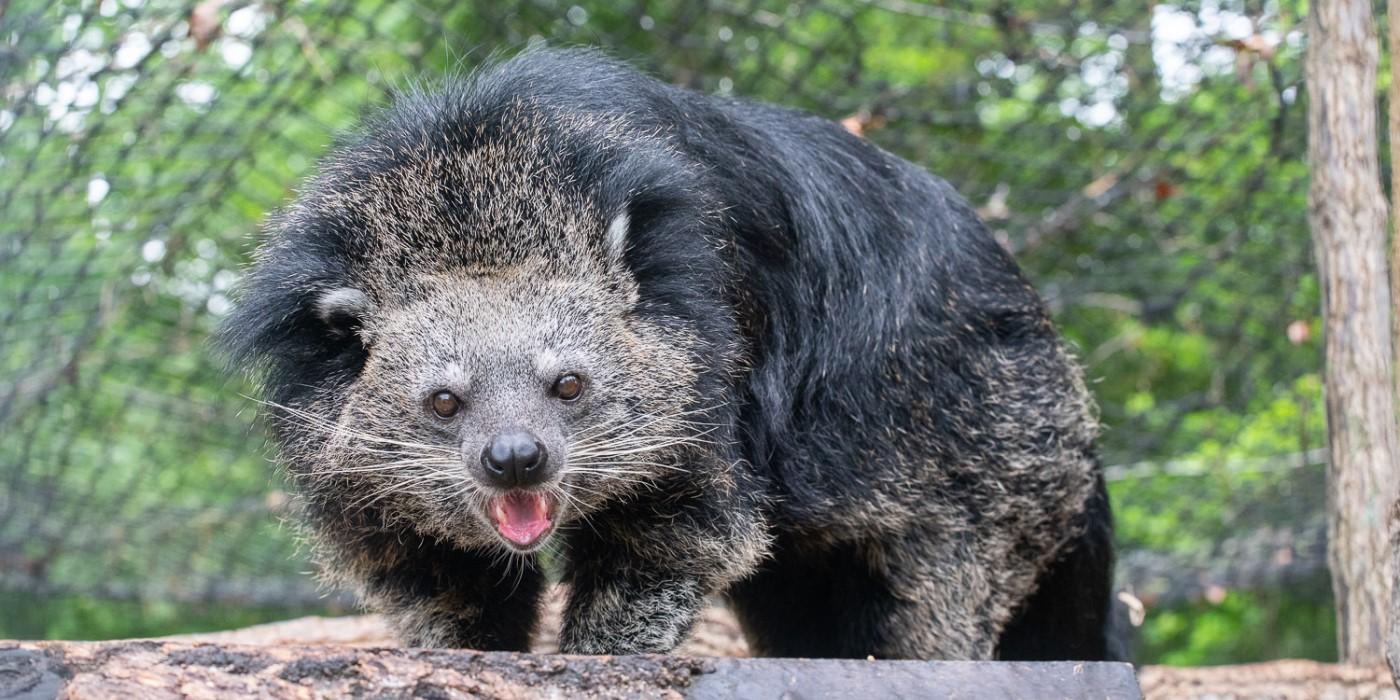Creature Feature: Meet the “Grumpy” Pallas’s Cat
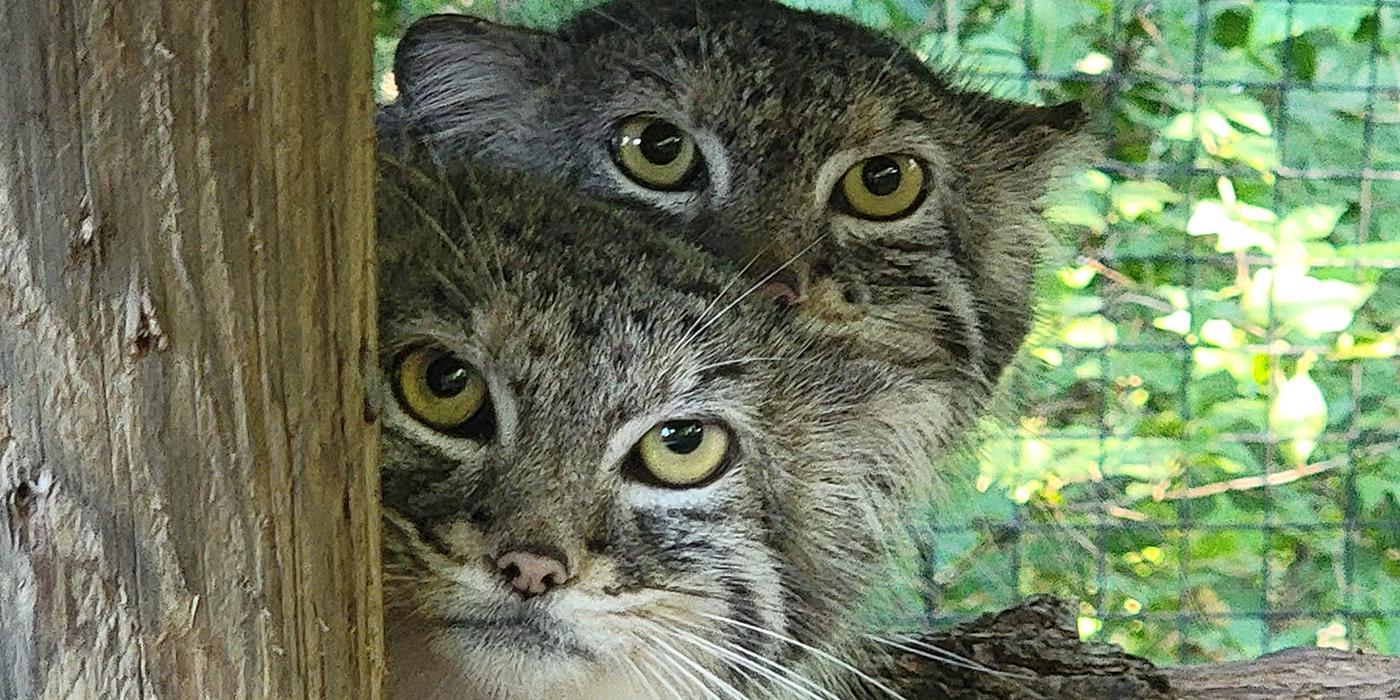
It looks like the angriest housecat you’ve ever seen, but it’s actually the Pallas’s cat: a small wildcat known for its thick fur and unusual face. Also called the manul, these elusive felines are well-adapted to life among the cold, rugged hills of Central Asia.
1. These woolly cats thrive in extreme temperatures.
The Eurasian steppe covers millions of square miles of open grasslands, savannas and rolling hills stretching from the Iranian Plateau to the eastern edges of China. Pallas’s cats are primarily found in the rocky hills and small mountains within this vast ecoregion.
Pallas’s cats have the densest fur of any cat in the world. Their gray winter coats help them stay insulated when temperatures in the mountains drop below -58 degrees Fahrenheit (-50 degrees Celsius). In the summer, when temperatures soar over 90 degrees (32 degrees Celsius), they shed most of their fluff to stay cool.
2. Their bodies are different from housecats.
They’re about the same size as their domestic cousins, but Pallas’s cats are much hardier. They have solid, stocky muscles and a thick layer of fat all over their bodies. While not great at running long distances, their short legs help them stay low to the ground while stalking prey.
Some researchers think their strange-looking faces might be another environmental adaptation to the cold. The unusual shape of their skulls means they have small foreheads, and their eyes are positioned higher up on their face than domestic cats. This may help them see better while hunting, especially in situations where they lay flat on the ground and falling snow builds up around their face.
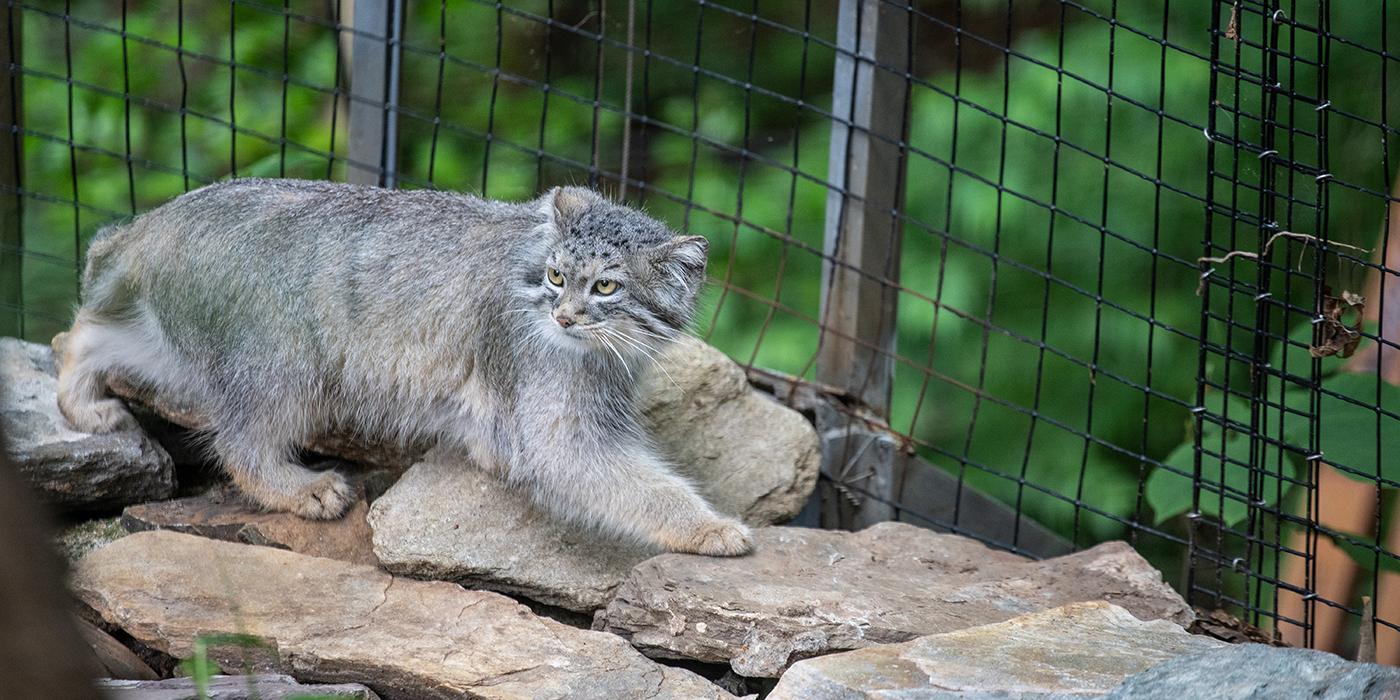
3. They use their thick, bushy tails to keep their feet warm.
When temperatures drop, Pallas’s cats protect their paws from the cold by sitting on their tails.
4. They are great at keeping a low profile.
Wild Pallas’s cats have hunting ranges that cover several square miles, which means they occasionally need to travel across the flat grasslands of the steppe to find areas where food is plentiful. Without trees or boulders to hide under, wandering Pallas’s cats are vulnerable to attack from aerial predators like the steppe eagle.
How do you hide on the open plains? These clever cats employ a clever strategy: they lay flat and still on their bellies. Thanks to their natural camouflage, it can be extremely difficult for predators on the move to tell the difference between a Pallas’s cat and a small rock.
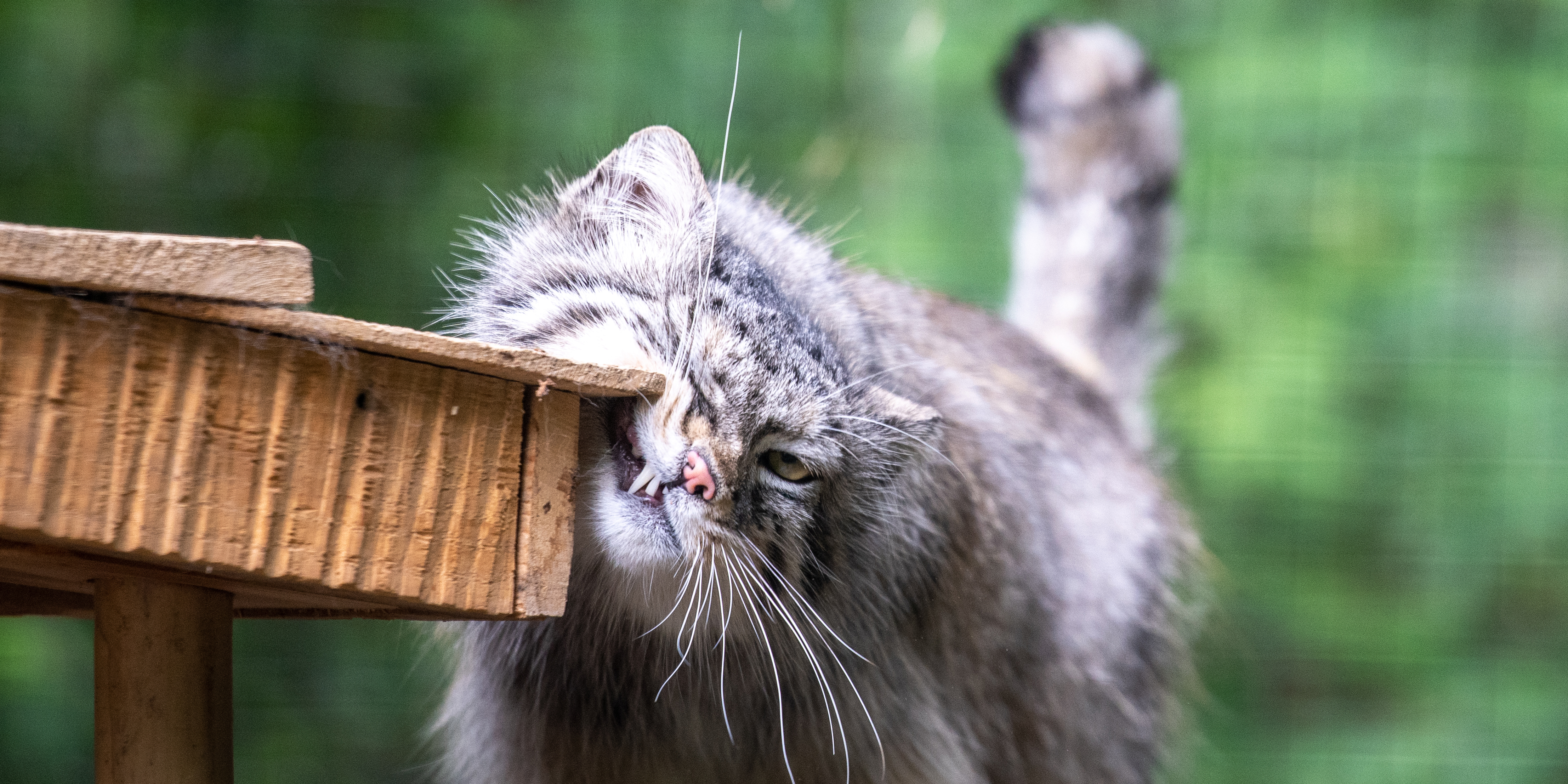
5. They are prolific hunters that help balance their environment.
Pallas’s cats are ambush predators. They are most effective when they stay low to the ground, using their short legs to inch towards their prey before pouncing at the right moment.
One of the ways Pallas’s cats contribute to the overall health of their environment is by controlling rodent populations. A single adult can eat up to five pikas, voles, and mice in one day.
6. You’ll never hear a Pallas’s cat meow.
Unlike domestic cats, Pallas’ cats don’t meow. When they need to communicate, they’ll honk, growl and chirp at each other. When they are excited or scared, they make a sound much more like the yelp of a small dog than any typical cat sound.
7. Their scientific name roughly translates to "stumpy-eared cat".
Most members of the cat family are categorized under the scientific group Felis, but the Pallas’s cat is the single member of the group Otocolobus. In the Greek language, “oto-” is a prefix that means ear, while “colobus” can mean “maimed”, “docked,” or “cut short”, referring to the stumpy shape of the cat’s ears.
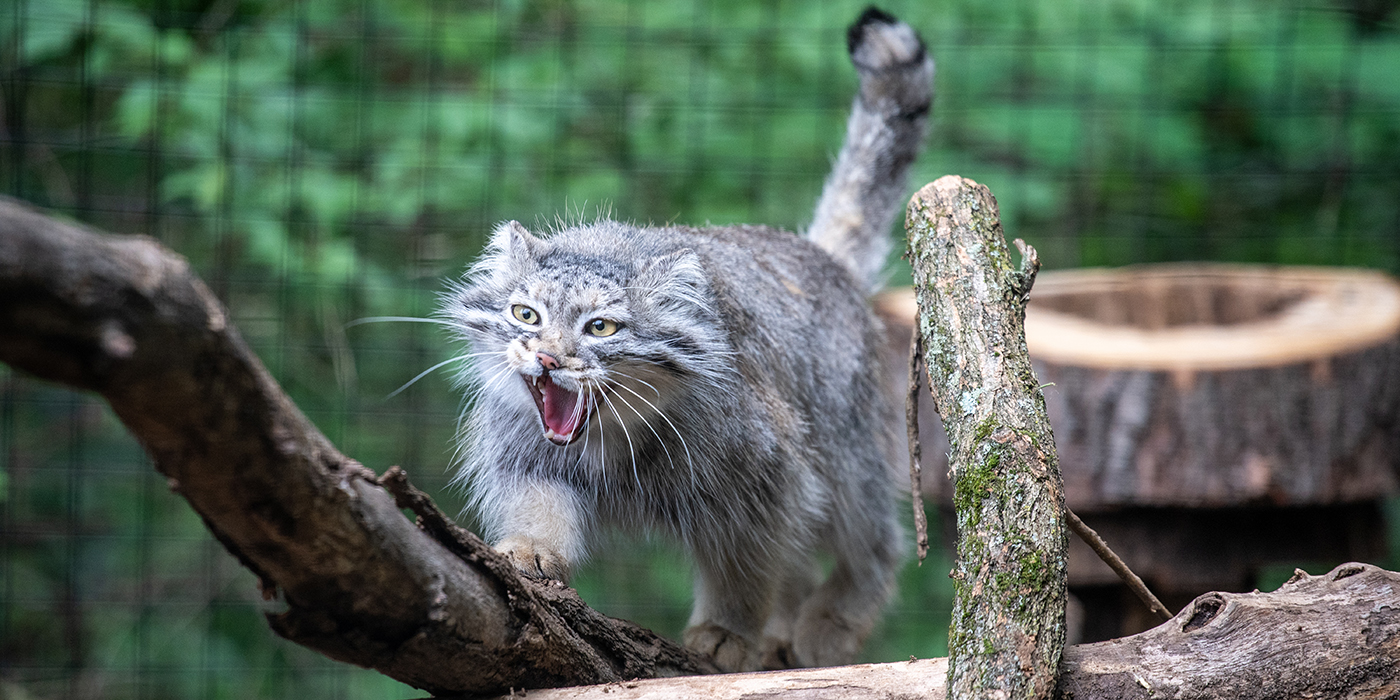
8. They do NOT make good pets.
These little predators are not as cuddly as they seem. Pallas’s cats have never been domesticated and are very territorial. Like many wild cats, they can become aggressive when threatened. Wild animals should only be housed in specialized facilities with trained staff that can meet their social, mental, physical and nutritional needs.
9. Scientists aren’t sure how many Pallas’s cats are out there—but they appear to be in decline.
Pallas’s cats are considered ‘Near Threatened’ on the IUCN’s Red List of Threatened Species. This means scientists don’t believe they’re in immediate danger of being extinct, but they still face significant challenges. Illegal poaching, habitat loss and accidental poisoning from farmers are the biggest threats to their survival.
While populations seem to be declining in the western parts of their range, these secretive cats are notoriously hard to count. They naturally avoid people, they’re not active in the daytime, and their ability to blend into their surroundings makes them extremely tough to spot.
10. You can come face-to-face with a pair of Pallas’s cats at the Smithsonian’s National Zoo and Conservation Biology Institute in Washington, D.C.
Before your next visit to the Zoo, read what Claws & Paws Pathway curator Craig Saffoe has to say about sisters Akar and Ceba. When you arrive, you can meet inspiring animals and discover how the Smithsonian works to protect wildlife and habitats across the globe.
Related Species:

